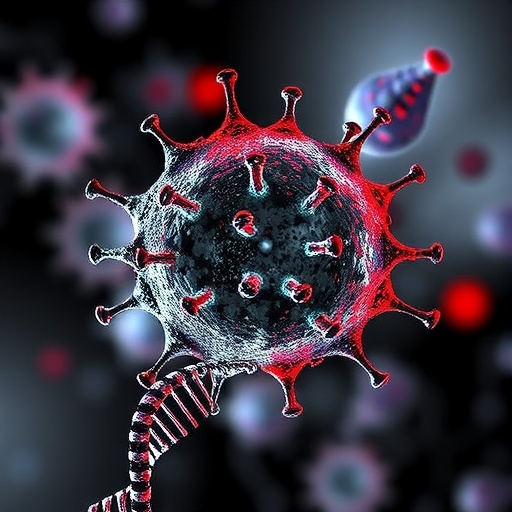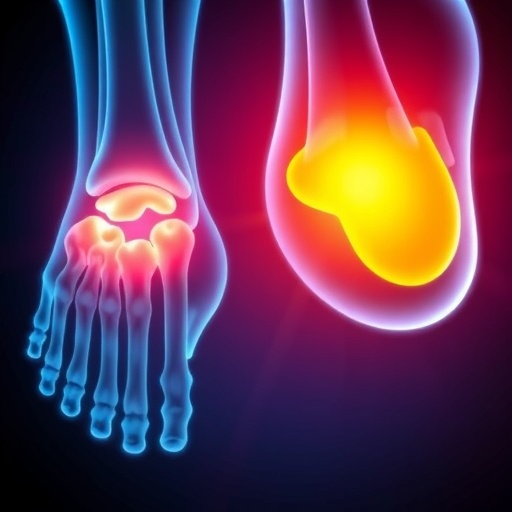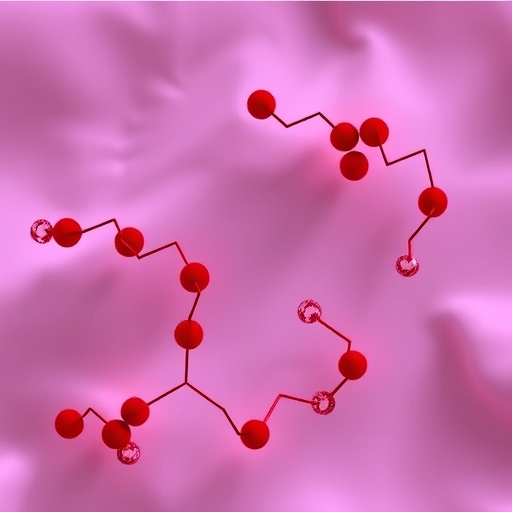In a groundbreaking development that promises to revolutionize oncology diagnostics, a team of international researchers has unveiled a novel method for detecting cancer that transcends tumor type and dataset limitations. This innovative approach harnesses the subtle interplay between cell-free DNA (cfDNA) fragment coverage and chromatin accessibility patterns, opening a new frontier in non-invasive cancer detection with unprecedented sensitivity and specificity.
The study, published this year in Nature Communications, introduces a sophisticated bioinformatic framework that correlates cfDNA fragment data with open chromatin landscapes across various human cell types. Cell-free DNA—small fragments of DNA freely circulating in the bloodstream—has long fascinated scientists due to its potential as a liquid biopsy marker. However, translating fragmented cfDNA profiles into accurate cancer diagnostics has been a formidable challenge owing to the heterogeneity of tumors and the fragmented, often noisy nature of cfDNA data.
Normally, cfDNA fragments shed from dying cells reflect the nucleosomal architecture and chromatin state of their cells of origin. Open chromatin regions, characterized by accessible DNA devoid of nucleosome occupancy, facilitate active gene transcription and regulatory dynamics. By systematically mapping cfDNA fragment coverage against these chromatin accessibility signatures, the research team aimed to decode the cellular origins of cfDNA and detect malignancies with remarkable precision.
What sets this method apart is its pan-cancer applicability, meaning it can detect multiple cancer types using a unified analytic model. Whereas previous efforts often focused on specific cancers or required extensive tissue-specific training data, this cross-dataset model leverages conserved chromatin features common across cancer types. This universality emerges by correlating fragment coverage patterns with established open chromatin sites derived from an array of cell types, rather than relying solely on tumor-specific genomic alterations.
Technically, the researchers utilized high-throughput sequencing data from plasma samples of cancer patients and healthy controls, integrating datasets from diverse cohorts. By aligning cfDNA fragments to the reference genome and quantifying coverage at open chromatin loci identified by assays such as ATAC-seq and DNase-seq, they constructed a detailed map of cfDNA origin with cell-type resolution. Advanced machine learning algorithms then discerned cancer-associated aberrations within these maps, enabling distinction between malignant and non-malignant states.
Importantly, the approach circumvents limitations of mutation-based liquid biopsies, which often struggle with low tumor fraction or mutational heterogeneity. Instead, by focusing on epigenomic features that reflect cellular identity and chromatin state changes wrought by oncogenesis, the method captures a broader biological signature of cancer presence. This epigenetic lens provides a richer, more nuanced diagnostic framework than mutation-centric strategies.
The study’s results demonstrated robust cross-validation performance across multiple independent datasets, highlighting the model’s generalizability. Not only could the technique discriminate cancer patients from healthy individuals with high accuracy, but it also showed potential in detecting early-stage cancers, which remains the holy grail of liquid biopsy research. Early diagnosis dramatically improves patient outcomes, and the ability to detect disparate cancer types with a single test could transform screening paradigms.
Moreover, the authors delved into the mechanistic underpinnings of their observations, elucidating how tumorigenic processes reshape chromatin landscapes, producing characteristic fragment coverage patterns detectable via cfDNA. They proposed that tumor cells’ altered epigenetic regulation leads to distinct nucleosome positioning and chromatin accessibility changes, which are faithfully mirrored in circulating DNA fragments. This insight bridges molecular biology and clinical diagnostics, underscoring a fundamental epigenetic hallmark of neoplasia.
Another vital contribution of this work is the demonstration of the feasibility of cross-dataset harmonization. Integrating cfDNA and open chromatin data from multiple sources is hampered by technical variability, batch effects, and biological diversity. The team deployed rigorous normalization and correction techniques, ensuring that their pan-cancer detection model remained resilient across different experimental settings. This resilience is critical for potential clinical translation, where blood samples come from heterogeneous populations and laboratory environments.
This research also sets the stage for future enhancements leveraging multi-omic integration. Combining cfDNA fragmentomics with other circulating biomarkers, such as methylation signatures or circulating tumor cells, could elevate diagnostic power further. The multimodal approach may afford comprehensive tumor profiling, enabling not just detection but also insights into tumor subtype, progression, and response to therapy, all through a minimally invasive blood draw.
Of equal importance is the ethical and societal implication of developing widely accessible, non-invasive cancer detection tools. Earlier detection means earlier treatment, which can reduce the burden on healthcare systems and improve quality of life for millions. However, the deployment of such sensitive diagnostics must be accompanied by careful consideration of false positives, patient counseling, and confirmatory testing to avoid undue anxiety or unnecessary interventions.
Critics might question feasibility at a population scale or the cost-efficiency of such approaches. Yet, the simplicity of cfDNA isolation combined with rapidly advancing sequencing technologies suggests that scalable, cost-effective screening platforms are within reach. As sequencing costs continue to plummet and computational frameworks mature, integrating this pan-cancer detection method into routine clinical workflows seems increasingly practical.
The potential for this technology to synergize with personalized medicine is equally compelling. By unveiling the epigenetic footprint of tumors from a simple blood sample, oncologists could tailor treatments based on the unique chromatin landscape of a patient’s tumor, monitor therapeutic efficacy in real-time, and detect recurrence before clinical symptoms emerge. Such dynamic monitoring represents a paradigm shift in cancer care.
Ultimately, the work by Olsen, Odinokov, Holsting, et al., represents a paradigm leap in liquid biopsy science. By marrying the fields of cfDNA genomics and chromatin biology, it opens a versatile, pan-cancer diagnostic vista that transcends traditional tumor-centric boundaries. This study exemplifies the power of interdisciplinary collaboration, where computational innovation meets molecular insight to forge tools that could change cancer diagnosis and management forever.
As the scientific community digests these findings, the next steps will be rigorous clinical validation and prospective trials to confirm utility in real-world screening and diagnostic settings. If successful, this technology could democratize access to cancer diagnostics globally, ushering in an era where cancer is caught early, treated effectively, and ultimately, beaten.
In the grand narrative of cancer research, this development marks a significant milestone reminding us that the keys to tackling one of humanity’s most devastating diseases may lie not just in understanding the genome’s sequence but also in decoding its epigenetic choreography through the subtle patterns of cfDNA fragments coursing through our blood.
Subject of Research:
Cross-dataset pan-cancer detection using cell-free DNA fragment coverage correlated with open chromatin sites across cell types.
Article Title:
Cross-dataset pan-cancer detection by correlating cell-free DNA fragment coverage with open chromatin sites across cell types.
Article References:
Olsen, L.R., Odinokov, D., Holsting, J.Q. et al. Cross-dataset pan-cancer detection by correlating cell-free DNA fragment coverage with open chromatin sites across cell types. Nat Commun (2025). https://doi.org/10.1038/s41467-025-66503-3
Image Credits:
AI Generated
Tags: bioinformatics in oncologycancer detection sensitivity and specificitycell-free DNA analysiscfDNA fragment coveragechromatin accessibility patternschromatin correlation in cancerinnovative cancer researchliquid biopsy technologiesNature Communications publicationnon-invasive cancer diagnosticspan-cancer detection methodstumor heterogeneity challenges





